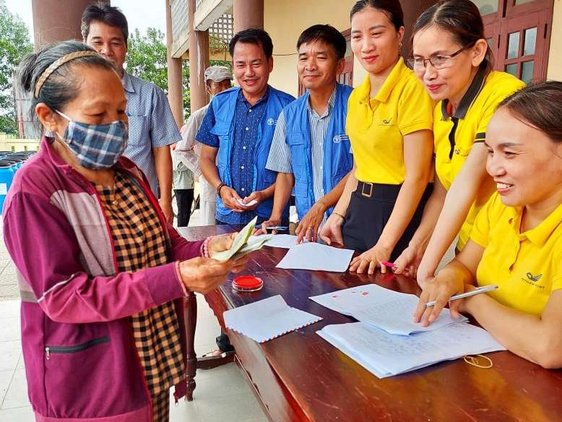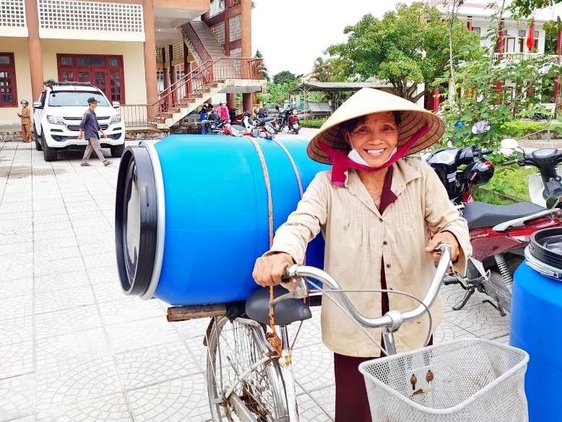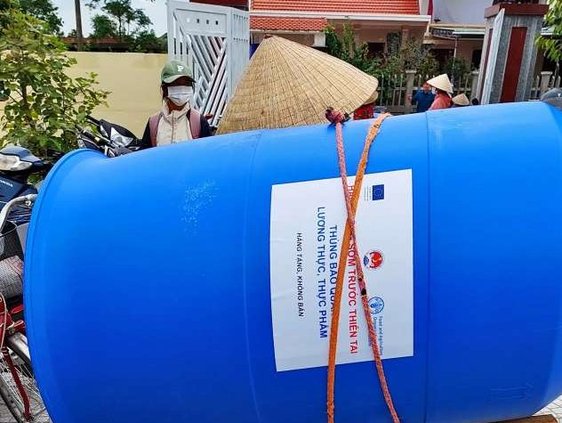FAO activates its anticipatory action protocol for typhoons in Viet Nam
Typhoon Noru is expected to hit Viet Nam in the morning of 28 September 2022. Forecasts show there is a high likelihood that it will hit provinces in Central Viet Nam, with winds reaching Typhoon Category 1 levels at a minimum. In light of these forecasts, the Food and Agriculture Organization of the United Nations (FAO) activated its anticipatory action protocol for typhoons over the weekend, to protect livelihoods and food security ahead of the event.
During the three days before Typhoon Noru is due to make landfall near Thua Thien Hue and Quang Tri provinces, the FAO project team is distributing cash and waterproof drums to store food and agricultural assets (e.g., seeds, tools) to communities expected to be affected. It is also assisting them in moving their livestock to locations safe from typhoon-induced flooding.
Now, in the provinces, we see that not many people are well aware that a super typhoon is coming and the damage it has already done with our neighbours in the Philippines. We used the distribution of cash and water-tight drums to help inform them of the hazard and how they can protect themselves.
The protocol was designed in close collaboration with government counterparts from the national Viet Nam Disaster Management Authority and provincial disaster management offices. For the trigger methodology, there was coordination with partners from the Viet Nam Red Cross and a consortium of non-governmental organizations including CARE, World Vision and Plan International.
This activation – the first of its kind in Viet Nam – is supported by the Directorate-General for European Civil Protection and Humanitarian Aid Operations and aims to inspire further national and provincial action towards the anticipatory action approach in the future.

Implementation of anticipatory actions ahead of Typhoon Noru in Viet Nam. © FAO Viet Nam

Implementation of anticipatory actions ahead of Typhoon Noru in Viet Nam. © FAO Viet Nam

Implementation of anticipatory actions ahead of Typhoon Noru in Viet Nam. © FAO Viet Nam

Implementation of anticipatory actions ahead of Typhoon Noru in Viet Nam. © FAO Viet Nam
Implementation of anticipatory actions ahead of Typhoon Noru in Viet Nam. © FAO Viet Nam
Implementation of anticipatory actions ahead of Typhoon Noru in Viet Nam. © FAO Viet Nam
Further information
For questions about this activation, please contact Catherine Jones at FAO’s Regional Office for Asia and the Pacific.
